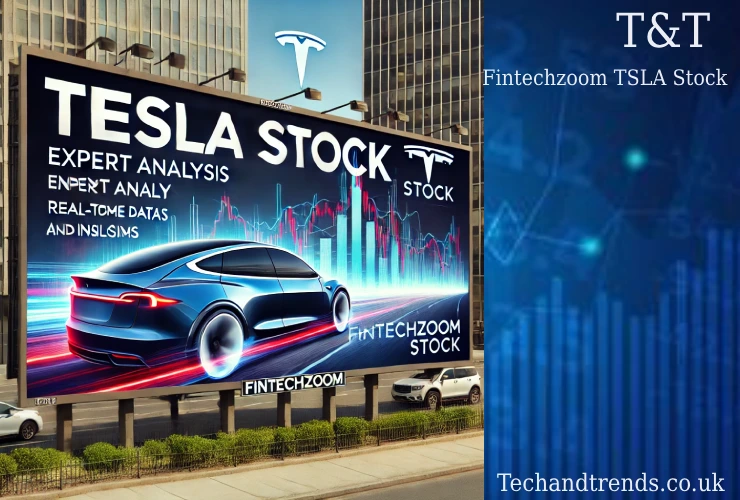Tesla Inc. (NASDAQ: TSLA) has experienced a rollercoaster ride in the stock market over the past few years, marked by significant volatility and remarkable growth. From its meteoric rise in 2020 to the challenges it faced in 2022, various factors, including market trends, economic conditions, and the company’s strategic decisions, have influenced Tesla’s stock performance. The fluctuations in fintechzoom TSLA stock have captured the attention of investors and analysts alike, as they navigate through the complexities of this dynamic automotive giant.
Historical Stock Performance
In 2020, Tesla’s stock price surged by an astounding 731.18%, driven by strong sales growth and the increasing adoption of electric vehicles (EVs) worldwide. This growth momentum continued into 2021, where the stock gained 46.89%. However, 2022 proved to be a challenging year, with Tesla’s stock plummeting 67.8% due to broader market corrections and concerns over supply chain disruptions and competition in the EV space.
As of January 2025, Tesla’s stock has shown signs of recovery, with a 61.48% increase in 2024 and a modest 1.6% gain projected for 2025 so far. The company’s ability to navigate through these ups and downs is crucial for investors looking at the long-term potential of fintechzoom TSLA stock.
Key Factors Influencing Tesla’s Stock Growth
Several key factors have played a pivotal role in shaping Tesla’s stock performance:
- Innovative Product Lineup: Tesla’s continuous innovation in electric vehicles, including the introduction of new models like the Cybertruck, has attracted investor interest and consumer demand.
- Market Leadership: With a dominant market share of approximately 70% in battery-powered electric car sales in the U.S., Tesla has established itself as a leader in the EV market.
- Technological Advancements: The company’s advancements in autonomous driving technology and AI integration have positioned it as a technology company rather than just an automaker, further boosting investor confidence.
- Strategic Partnerships: Collaborations with tech firms and investments in battery technology have enhanced Tesla’s operational efficiency and product offerings.
Emerging Technologies Driving Tesla’s Success
Tesla’s success is closely linked to its commitment to emerging technologies that enhance its product offerings:
- Full Self-Driving (FSD): The development of FSD technology is expected to be a significant revenue driver for Tesla. Analysts predict that licensing FSD could contribute significantly to the company’s valuation moving forward.
- Battery Technology: Innovations in battery technology not only improve vehicle performance but also reduce costs, making EVs more accessible to consumers. Tesla’s recent advancements in solid-state batteries could revolutionize energy storage solutions.
- Autonomous Fleet: The vision for an autonomous ride-hailing service could open new revenue streams for Tesla, positioning it as a leader in the future of transportation.
Market Trends Shaping Tesla’s Future
The future of fintechzoom TSLA stock will be influenced by several market trends:
- Growing Demand for EVs: As governments worldwide push for greener transportation solutions, the demand for electric vehicles is expected to rise significantly. According to industry reports, global EV sales are projected to reach over 30 million units by 2030, creating substantial opportunities for Tesla.
- Regulatory Support: Favorable regulations and incentives for EV purchases are likely to encourage more consumers to switch from traditional vehicles. In many regions, tax credits and rebates are making EVs more financially attractive.
- Increased Competition: While Tesla currently leads the market, competition from established automakers entering the EV space could impact its market share and pricing strategies. Companies like Ford and General Motors are ramping up their EV production capabilities, which may challenge Tesla’s dominance.
Challenges Ahead for Tesla and Its Investors
Despite its successes, Tesla faces several challenges:
- Supply Chain Issues: Ongoing global supply chain disruptions can impact production timelines and costs. The semiconductor shortage has particularly affected automotive manufacturers worldwide.
- Market Volatility: Economic fluctuations can lead to increased volatility in stock prices, affecting investor sentiment. Investors should be prepared for potential ups and downs as macroeconomic conditions evolve.
- Regulatory Hurdles: Navigating regulatory landscapes in different countries can pose challenges for expansion plans. Changes in emissions regulations or trade policies could impact operations.
Fintechzoom TSLA Stock: Predictions for 2025 and Beyond
Looking ahead to 2025, analysts remain optimistic about Tesla’s growth trajectory. Piper Sandler recently raised its price target for TSLA from $315 to $500, citing strong demand forecasts and potential revenue from FSD licensing. They predict that Tesla will deliver approximately 1.96 million units in 2025, with expectations for continued growth beyond that.
Long-Term Projections
Analysts anticipate that by 2032, Tesla could max out at around 4.6 million units per year, solidifying its position as a leading player in the automotive industry. The focus will likely shift from merely launching new vehicles to enhancing software capabilities and expanding into new markets.
The Role of EV Market Expansion in Tesla’s Growth
The expansion of the electric vehicle market is crucial for Tesla’s continued success. As more consumers adopt EVs due to environmental concerns and cost savings on fuel, companies like Tesla stand to benefit significantly. The growing infrastructure for charging stations also supports this transition.
Impact of Global Initiatives
Global initiatives aimed at reducing carbon emissions are further propelling EV adoption. Countries like Norway have set ambitious targets to phase out gasoline-powered vehicles entirely by 2025. Such initiatives create fertile ground for companies like Tesla that are already well-positioned within the EV sector.
How Economic Shifts Could Impact Tesla’s Valuation
Economic shifts such as inflation rates, interest rates, and consumer spending habits can impact Tesla’s valuation:
- Inflationary Pressures: Rising costs may affect production expenses and ultimately influence pricing strategies. If inflation continues at current rates, it could squeeze profit margins if not managed effectively.
- Interest Rates: Higher interest rates can deter consumers from financing vehicle purchases, potentially impacting sales. This factor is particularly relevant as central banks worldwide adjust monetary policies.
- Consumer Confidence: Economic downturns could lead to reduced consumer spending on high-ticket items like vehicles. Monitoring consumer sentiment will be crucial for predicting sales trends.
Expert Opinions on Tesla’s Long-Term Prospects
Experts generally maintain a positive outlook on Tesla’s long-term prospects due to its innovative approach and strong brand loyalty. Many analysts view it as more than just an automotive company; they see it as a tech leader poised for significant growth.
Analyst Ratings
As of early 2025, many analysts have rated TSLA as a “Buy,” citing its strong fundamentals and growth potential. While some caution against short-term volatility due to macroeconomic factors, they believe that long-term investors will benefit from holding onto their shares.
Investment Strategies for TSLA Stock Enthusiasts
For investors interested in fintechzoom TSLA stock, several strategies may be beneficial:
- Long-Term Holding: Given its potential for growth, holding onto shares over an extended period may yield favorable returns. Investors should focus on long-term trends rather than short-term fluctuations.
- Diversification: Investing across various sectors can mitigate risks associated with volatility in individual stocks. Including other tech or green energy stocks can provide balance.
- Monitoring Market Trends: Staying informed about regulatory changes and technological advancements can help investors make timely decisions.
Dollar-Cost Averaging
Consider employing dollar-cost averaging when investing in TSLA stock. This strategy involves consistently investing a fixed amount over time regardless of share price fluctuations, helping reduce the impact of volatility on your overall investment.
Utilizing Options Strategies
For more experienced investors, options trading can provide additional avenues for profit while managing risk exposure. Covered calls or protective puts can be effective strategies when dealing with high-volatility stocks like TSLA.
Conclusion
In conclusion, while fintechzoom TSLA stock has faced challenges over recent years, its innovative product offerings and strong market position provide a compelling case for long-term investment. As we move further into 2025 and beyond, keeping an eye on both internal developments within Tesla and external market conditions will be essential for investors looking to capitalize on this dynamic company.
Tesla stands at the forefront of an evolving automotive landscape where sustainability meets cutting-edge technology. For those willing to navigate the complexities of investing in such a rapidly changing environment, opportunities abound—making fintechzoom TSLA stock not just an investment but a stake in the future of transportation itself.





Comments are closed.